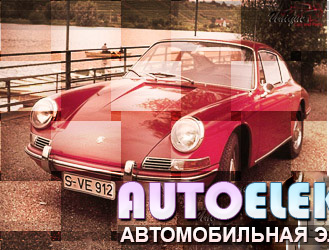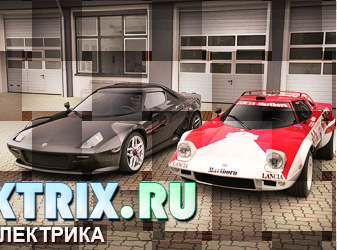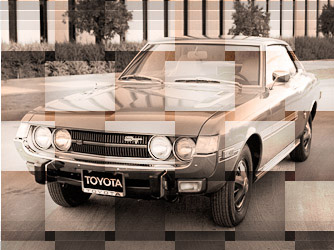 |
 |
 |
| Главная Журналы Популярное Audi - почему их так назвали? Как появилась марка Bmw? Откуда появился Lexus? Достижения и устремления Mercedes-Benz Первые модели Chevrolet Электромобиль Nissan Leaf |
Главная » Журналы » Metal oxide semiconductor 1 ... 88 89 90 91 22.3 Resonance Charging........................................................... 534 22.4 Switching Converters.......................................................... 535 23 Power Electronics for Renewable Energy Sources C. V. Nayar, S. M. Islam, and Hari Sharma........... 539 23.1 Introduction................................................................ 539 23.2 Power Electronics for Photovohaic Power Systems...................................... 540 23.3 Power Electronics for Wind Power Systems........................................... 562 24 HVDC Transmission Vijay K. Sood.................................................... 575 24.1 Introduction................................................................ 575 24.2 Main Components of HVDC Converter Station........................................ 580 24.3 Analysis of Converter Bridges.................................................... 583 24.4 Controls and Protection........................................................ 583 24.5 MTDC Operation............................................................ 589 24.6 Applications................................................................ 591 24.7 Modern Trends.............................................................. 592 24.8 DC System Simulation Techniques................................................. 595 24.9 Conclusion................................................................. 596 25 Multilevel Converters and VAR Compensation Azeddine Draou, Mustapha Benghanem, and Ali Tahri...... 599 25.1 Introduction................................................................ 599 25.2 Reactive Power Phenomena and Their Compensation.................................... 600 25.3 Modehng and Analysis of an Advanced Static VAR Compensator............................ 603 25.4 Static VAR Compensator for the Improvement of Stability of a Turbo Ahernator................. 612 25.5 Multilevel Inverters............................................................ 615 25.6 The Harmonics Elimination Method for a Three-Level Inverter............................. 619 25.7 Three-Level ASVC Structure Connected to the Network................................... 622 26 Drive Types and Specifications Yahya Shakweh........................................... 629 26.1 Overview.................................................................. 629 26.2 Drive Requirements and Specifications.............................................. 633 26.3 Drive Classifications and Characteristics............................................. 636 26.4 Load Profiles and Characteristics.................................................. 641 26.5 Variable-Speed Drive Topologies................................................... 644 26.6 PWM VSI Drive............................................................. 650 26.7 Applications................................................................ 657 26.8 Summary.................................................................. 660 27 Motor Drives M. F. Rahman, D. Patterson, A. Cheok, and R. Betts............................... 663 27.1 Introduction................................................................ 664 27.2 DC Motor Drives............................................................. 665 27.3 Induction Motor Drives........................................................ 670 27.4 Synchronous Motor Drives...................................................... 681 27.5 Permanent Magnet ac Synchronous Motor Drives....................................... 689 27.6 Permanent-Magnet Brushless dc (BLDC) Motor Drives................................... 694 27.7 Servo Drives................................................................ 704 27.8 Stepper Motor Drives.......................................................... 710 27.9 Switched-Reluctance Motor Drives................................................. 717 27.10 Synchronous Reluctance Motor Drives.............................................. 727 28 Sensorless Vector and Direct-Torque-Controlled Drives Peter Vas and Pekka Tiitinen................. 28.1 General................................................................... 735 28.2 Basic Types of Torque-Controlled Drive Schemes: Vector Drives, Direct-Torque-Controlled Drives...... 736 28.3 Motion Control DSPS by Texas Instruments.......................................... 766 29 Artificial-Intelligence-Based Drives Peter Vas............................................. 769 29.1 General Aspects of the Application of AI-Based Techniques................................ 769 29.2 AI-Based Techniques........................................................... 770 29.3 AI Applications in Electrical Machines and Drives....................................... 773 29.4 Industrial Applications of AI in Drives by Hitachi, Yaskawa, Texas Instruments and SGS Thomson...... 774 29.5 Apphcation of Neural-Network-Based Speed Estimators................................... 774 30 Fuzzy Logic in Electric Drives Ahmed Rubaai............................................. 779 30.1 Introduction................................................................. 779 30.2 The Fuzzy Logic Concept........................................................ 779 30.3 Apphcations of Fuzzy Logic to Electric Drives.......................................... 784 30.4 Hardware System Description..................................................... 788 30.5 Conclusion.................................................................. 789 31 Automotive Applications of Power Electronics David J. Perreault, Khun am K. Afridi, and Iftikhar A. Khan ... 791 31.1 Introduction................................................................. 791 31.2 The Present Automotive Electrical Power System........................................ 792 31.3 System Environment........................................................... 792 31.4 Functions Enabled by Power Electronics.............................................. 797 31.5 Multiplexed Load Control........................................................ 801 31.6 Electromechanical Power Conversion................................................ 803 31.7 Dual/High-Voltage Automotive Electrical System........................................ 808 31.8 Electric and Hybrid Electric Vehicles................................................ 812 31.9 Summary................................................................... 813 32 Power Quality S. Mark Halpin and Angela Card............................................ 817 32.1 Introduction................................................................. 817 32.2 Power Quality................................................................ 818 32.3 Reactive Power and Harmonic Compensation.......................................... 823 32.4 IEEE Standards............................................................... 827 32.5 Conclusions................................................................. 828 33 Active Filters Luis Moran and Juan Dixon................................................ 829 33.1 Introduction................................................................. 829 33.2 Types of Active Power Fihers...................................................... 829 33.3 Shunt Active Power Fihers....................................................... 830 33.4 Series Active Power Fihers....................................................... 841 34 Computer Simulation of Power Electronics and Motor Drives Michael Giesselmann.................. 853 34.1 Introduction................................................................. 853 34.2 Use of Simulation Tools for Design and Analysis........................................ 853 34.3 Simulation of Power Electronics Circuits with PSpice®.................................... 854 34.4 Simulations of Power Electronic Circuits and Electric Machines.............................. 857 34.5 Simulations of ac Induction Machines using Field Oriented (Vector) Control..................... 860 34.6 Simulation of Sensorless Vector Control Using PSpice® Release 9............................. 863 34.7 Simulations Using Simplorer®.................................................... 868 34.8 Conclusions................................................................. 870 35 Packaging and Smart Power Systems Douglas С Hopkins..................................... 871 35.1 Introduction................................................................. 871 35.2 Background................................................................. 871 35.3 Functional Integration.......................................................... 872 35.4 Assessing Partitioning Technologies................................................. 874 35.5 FuU-Cost Model [5]............................................................ 877 35.6 Partitioning Approach.......................................................... 878 35.7 Example 2.2 kW Motor Drive Design................................................ 879 35.8 Acknowledgment.............................................................. 881 Index............................................................................. 883 Preface Introduction The purpose of Power Electronics Handbook is to provide a reference that is both concise and useful for engineering students and practicing professionals. It is designed to cover a wide range of topics that make up the field of power electronics in a weU-organized and highly informative manner. The Handbook is a careful blend of both traditional topics and new advancements. Special emphasis is placed on practical applications, thus, this Handbook is not a theoretical one, but an enlightening presentation of the usefulness of the rapidly growing field of power electronics. The presentation is tutorial in nature in order to enhance the value of the book to the reader and foster a clear understanding of the material. The contributors to this Handbook span the globe, with fifty-four authors from twelve different countries, some of whom are the leading authorities in their areas of expertise. AU were chosen because of their intimate knowledge of their subjects, and their contributions make this a comprehensive state-of-the-art guide to the expanding field of power electronics and its apphcations covering: the characteristics of modern power semiconductor devices, which are used as switches to perform the power conversions from ac-dc, dc-dc, dc-ac, and ac-ac; both the fundamental principles and in-depth study of the operation, analysis, and design of various power converters; and examples of recent applications of power electronics. Power Electronics Backgrounds The first electronics revolution began in 1948 with the invention of the sUicon transistor at BeU Telephone Laboratories by Bardeen, Bratain, and Schockley. Most of todays advanced electronic technologies are traceable to that invention, and modern microelectronics has evolved over the years from these sUicon semiconductors. The second electronics revolution began with the development of a commercial thyristor by the General Electric Company in 1958. That was the beginning of a new era of power electronics. Since then, many different types of power semiconductor devices and conversion techniques have been introduced. The demand for energy, particularly in electrical forms, is ever-increasing in order to improve the standard of living. Power electronics helps with the efficient use of electricity, thereby reducing power consumption. Semiconductor devices are used as switches for power conversion or processing, as are sohd state electronics for efficient control of the amount of power and energy flow. Higher efficiency and lower losses are sought for devices for a range of applications, from microwave ovens to high-voltage dc transmission. New devices and power electronic systems are now evolving for even more effective control of power and energy. Power electronics has already found an important place in modern technology and has revolutionized control of power and energy. As the voltage and current ratings and switching characteristics of power semiconductor devices keep improving, the range of applications continues to expand in areas such as lamp controls, power supplies to motion control, factory automation, transportation, energy storage, multi-megawatt industrial drives, and electric power transmission and distribution. The greater efficiency and tighter control features of power electronics are becoming attractive for applications in motion control by replacing the earher electro-mechanical and electronic systems. Applications in power transmission include high-voltage dc (VHDC) converter stations, flexible ac transmission system (FACTS), and static-var compensators. In power distribution these include dc-to-ac conversion, dynamic filters, frequency conversion, and Custom Power System. Almost aU new electrical or electromechanical equipment, from household air conditioners and computer power supplies to industrial motor controls, contain power electronic circuits Preface and/or systems. In order to keep up, working engineers LoCBtillg YoUt Topic involved in control and conversion of power and energy - into applications ranging from several hundred voltages at a fraction of an ampere for display devices to about 10,000 V at high-voltage dc transmission, should have a working knowledge of power electronics. A table of contents is presented at the front of the book, and each chapter begins with its own table of contents. The reader should look over these tables of contents to become famihar with the structure, organization, and content of the book. Organization Audience The Handbook starts with an introductory chapter and moves on to cover topics on power semiconductor devices, power converters, applications and peripheral issues. The book is organized into six areas, the first of which includes chapters on operation and characterizations of power semiconductor devices: power diode, thyristor, gate turn-off thyristor (GTO), power bipolar transistor (BJT), power MOSFET, insulated gate bipolar transistor, MOS controUed thyristor (MCT), and static induction devices. The next topic area includes chapters covering various types of power converters, the principles of operation and the methods for the analysis and design of power converters. This also includes gate drive circuits and control methods for power converters. The next three chapters cover applications in power supplies, electronics baUasts, renewable energy sources, HVDC transmission, VAR compensation, and capacitor charging. The foUowing six chapters focus on the operation, theory and control methods of motor drives, and automotive systems. We then move on to two chapters on power quality issues and active filters, and two chapters on computer simulation, packaging and smart power systems. The Handbook is designed to provide both students and practicing engineers with answers to questions involving the wide spectrum of power electronics. The book can be used as a textbook for graduate students in electrical or systems engineering, or as a reference book for senior undergraduate students and for engineers who are interested and involved in operation, project management, design, and analysis of power electronics equipment and motor drives. Acknowledgments This Handbook was made possible through the expertise and dedication of outstanding authors from throughout the world. I gratefully acknowledge the personnel at Academic Press who produced the book, including Jane Phelan. In addition, special thanks are due to Joel D. Claypool, the executive editor for this book. Finally, I express my deep appreciation to my wife, Fatema Rashid, who graciously puts up with my publication activities. Muhammad H. Rashid, Editor-in-Chief List of Contributors Chapter 1 Phihp Krein Department of Electrical and Computer Engineering University of Illinois at Urbana-Champaign 341 William L. Everitt Laboratory 1406 West Green Street Urbana, Illinois 61801 Chapter 2 Ah L Maswood School ofEEE Nanyang Technological University Nanyang Avenue Singapore 639798 Chapter 3 Jerry Hudgins, Enrico Santi, Antonio Caiafa, Katherine Lengel Department of Electrical Engineering University of South Carolina Columbia, South Carolina 29208 Patrick R. Palmer Department of Engineering Cambridge University Trumpington Street Cambridge CB2 IPZ UK Chapter 4 Muhammad H. Rashid Electrical and Computer Engineering University of West Florida 11000 University Parkway Pensacola, Florida 32514-5754 Chapter 5 Marcelo Godoy Simoes Engineering Division Colorado School of Mines Golden, Colorado 80401-1887 USA Chapter 6 Issa Batarseh College of Engineering and Computer Science University of Central Florida Orlando, Florida 32816 USA Chapter 7 S. Abedinpour Department of Electrical Engineering and Computer Science University of Illinois at Chicago Chicago, Illinois 60607 USA K. Shenai 851 South Morgan Street (М/С 154) Chicago, Illinois 60607-7053 USA Chapter 8 S. Yuvarajan Department of Electrical Engineering North Dakota State University P.O. Box 5285 Fargo, North Dakota 58105-5285 USA Chapter 9 B. M. Wilamowski College of Engineering University of Idaho Boise, ID 83712 USA Chapter 10 Yim Shu Lee, Martin H. L. Chow Department of Electronic and Information Engineering The Hong Kong Polytechnic University Hung Нот Hong Kong Chapter 11 Jose Rodriguez, Alejandro Weinstein Department of Electronics Universidad Tecnica Federico, Santa Maria Valparaiso Chile Chapter 12 Juan W. Dixon Department of Electrical Engineering Catholic University of Chile Vicuna Mackenna 4860 Santiago Chile Chapter 13 Dariusz Czarkowski Department of Electrical and Computer Engineering Polytechnic University Six Metrotech Center Brooklyn, New York 11201 Chapter 14 Jose R. Espinoza Depto. Ing Electrica, Of 220 Universidad de Concepcion Casilla 160-C, Correo 3 Concepcion Chile Chapter 15 S. Y (Ron) Hui, Henry S. H. Chung Department of Electronic Engineering City University of Hong Kong Tat Chee Avenue Kowloon Hong Kong Chapter 17 Fang Lin Luo, Hong Ye School of Electrical and Electronic Engineering Block S2 Nanyang Technological University Nanyang Avenue Singapore 639798 Muhammad H. Rashid Electrical and Computer Engineering University of West Florida 11000 University Parkway Pensacola, Florida 32514-5754 Chapter 18 M. Syed J. Asghar Department of Electrical Engineering Aligarh Muslim University Aligarh India Chapter 19 J. Fernando Silva Instituto Superior Tecnico CAUTL, DEEC Mdquinas Electricas e Electronica de Potencia (24) Technical University of Lisbon Av. Rovisco Pais 1, 1049-001 Lisboa Portugal Chapter 20 Y M. Lai Department of Electronic and Information Engineering The Hong Kong Polytechnic University Hung Нот Hong Kong Chapter 21 J. Marcos Alonso University of Oveido DIEECS - Tecnologia Electronica Campus de Viesques s/n Edificio de Electronica 33204 Gijon Spain Chapter 16 Ajit K. Chattopadhyay Electrical Engineering Department Bengal Engineering College Howrah-711 103 India Chapter 22 R. Mark Nelms Department of Electrical and Computer Engineering 200 Broun Hall Auburn University Auburn, Alabama 36849 Chapter 23 C. V. Nayar, S. M. Islam Centre for Renewable Energy and Sustainable Technologies Curtin University of Technology Perth, Western Australia Australia Hari Sharma ACRE (Australian CRC for Renewable Energy Ltd)/MUERI Murdoch University Perth, Western Australia Australia Chapter 24 Vijay K. Sood Expertise-Equipemen ts Electriques Hydro-Quebec (IREQ) 1800 Lionel Boulet Varennes, Quebec Canada J3X ISl Chapter 25 Azeddine Draou, A. Tahri, M. Benghanem University of Sciences and Technology of Oran B.P. 29013 Oran-USTO a Oran, Algeria R. Betts Department of Electrical and Computer Engineering University of Newcastle Callaghan, NSW 2308 Australia Chapter 28 Peter Vas Head of Intelligent Motion Control and Condition Monitoring Group University of Aberdeen Aberdeen AB24 3UE UK Pekka Tiitinen ABB Industry Oy Helsinki Finland Chapter 29 Peter Vas Head of Intelligent Motion Control and Condition Monitoring Group University of Aberdeen Aberdeen AB24 3UE UK Chapter 26 Yahya Shakweh Technical Director FKI Industrial Drives & Controls Meadow Lane Loughborough, Leicestershire, LEll INB UK Chapter 27 M. R Rahman School of Electrical Engineering and Telecommunications The University of New South Wales Sydney NSW 2052 Australia Chapter 30 Ahmed Rubaai Department of Electrical Engineering Howard University Washington, DC 20059 USA Chapter 31 David J. Perreault Massachusetts Institute of Technology Laboratory for Electromagnetic and Electronic Systems 77 Massachusetts Avenue Cambridge, Massachusetts 02139 D. Patterson Northern Territory Centre for Energy Research Faculty of Technology Northern Territory University Darwin, NT 0909 Australia A. Cheok Department of Electrical and Computer Engineering National University of Singapore 10 Kent Ridge Crescent Singapore 119260 Khurram Afridi Techlogix 800 West Cummings Park Woburn, Massachusetts 01801 USA Iftikhar A. Khan Delphi, Automotive Systems 2705 South Goyer Road MS D35, Kokomo, Indiana 46904 USA Chapter 32 S. Mark Halpin, Angela Card Department of Electrical and Computer Engineering Mississippi State University Mississippi State, Mississippi 39762 Chapter 34 Michael Giesselmann Department of Electrical Engineering Texas Tech University Lubbock, Texas 79409 Chapter 33 Luis Moran, Juan Dixon Department of Electrical Engineering Universidad de Concepcion Concepcion Chile Chapter 35 Douglas C. Hopkins Energy Systems Institute State University of New York at Buffalo Room 312, Bonner Hall Buffalo, New York 14260-1900 1 ... 88 89 90 91 |
|
© 2024 AutoElektrix.ru
Частичное копирование материалов разрешено при условии активной ссылки |